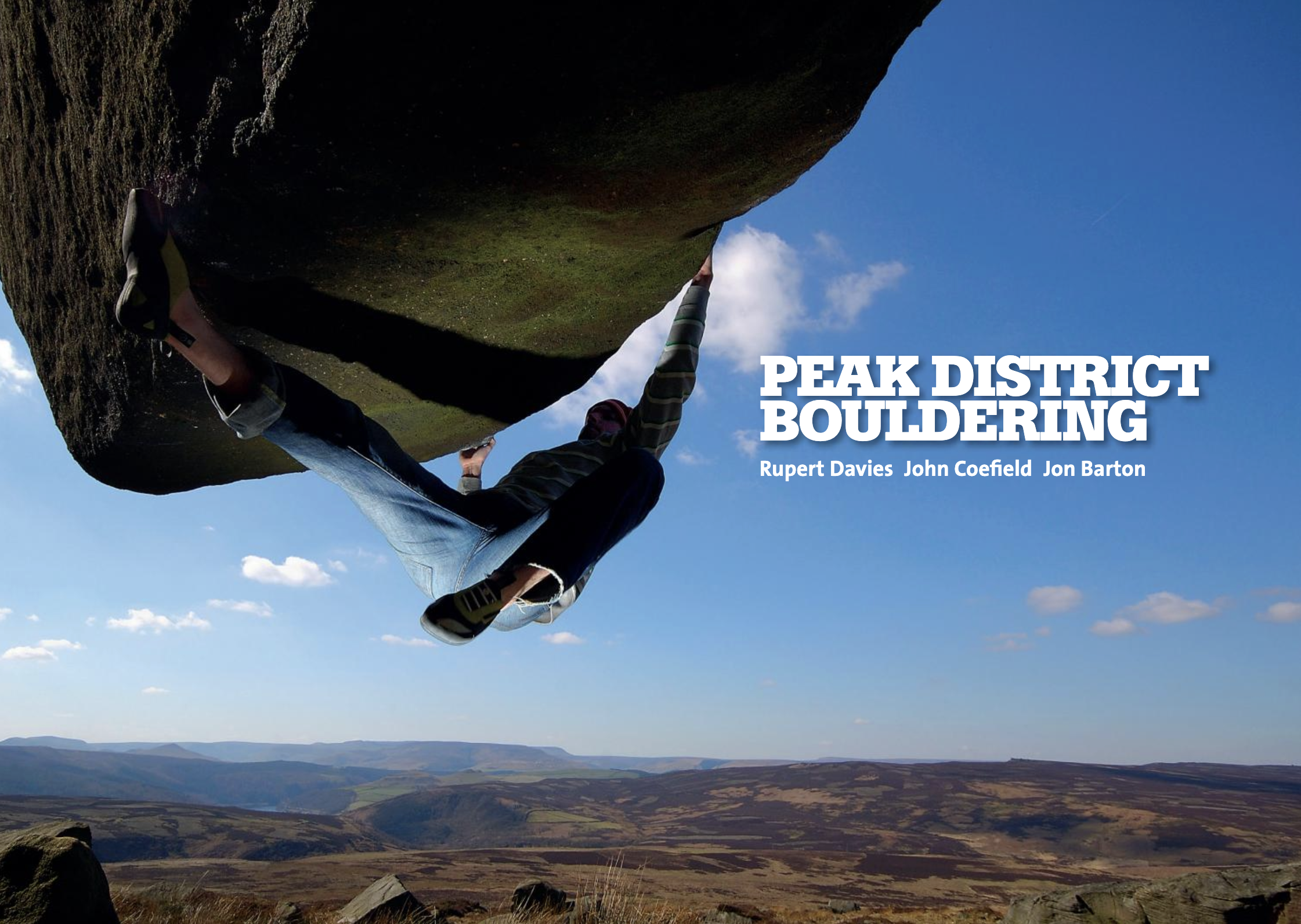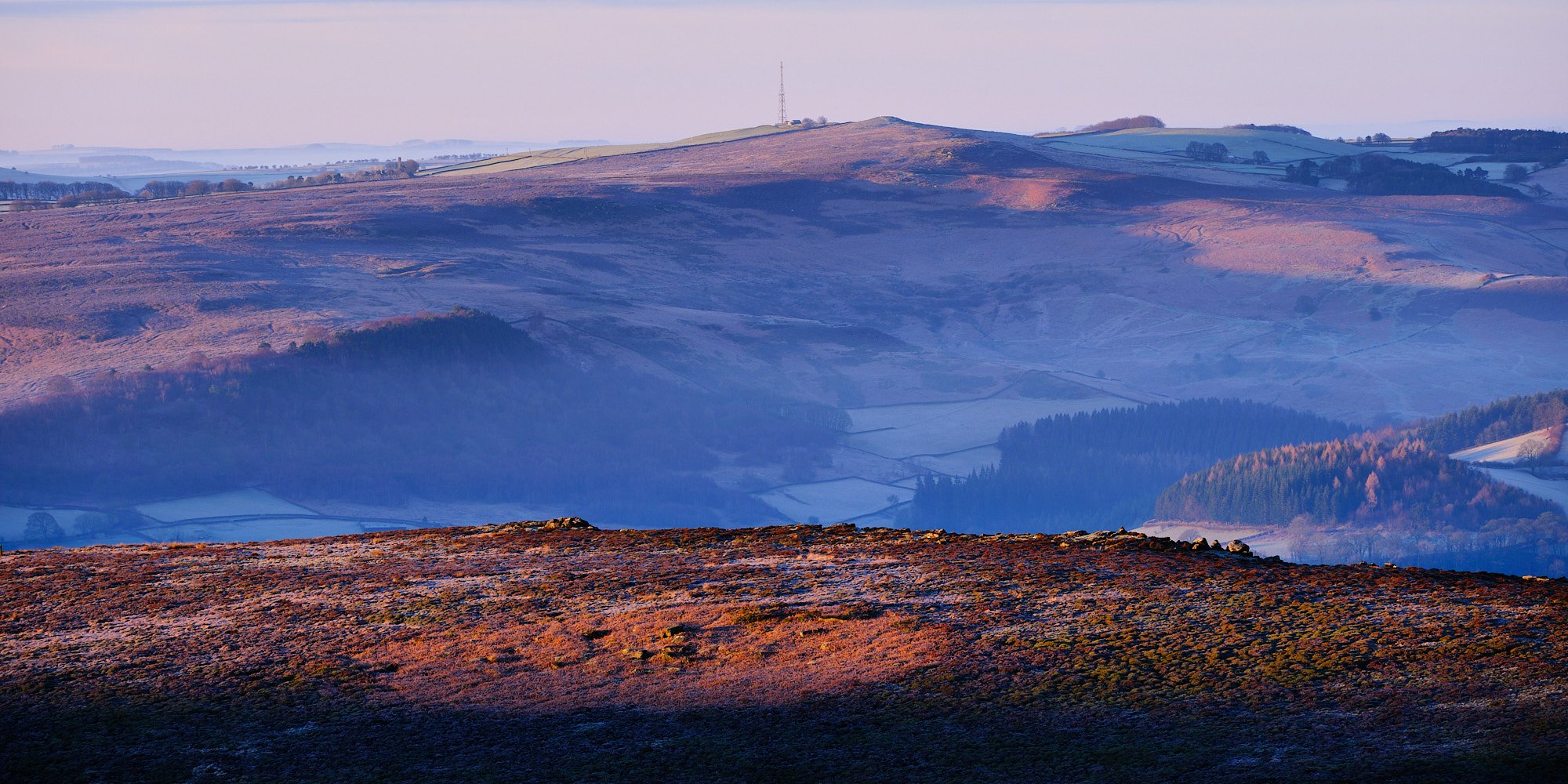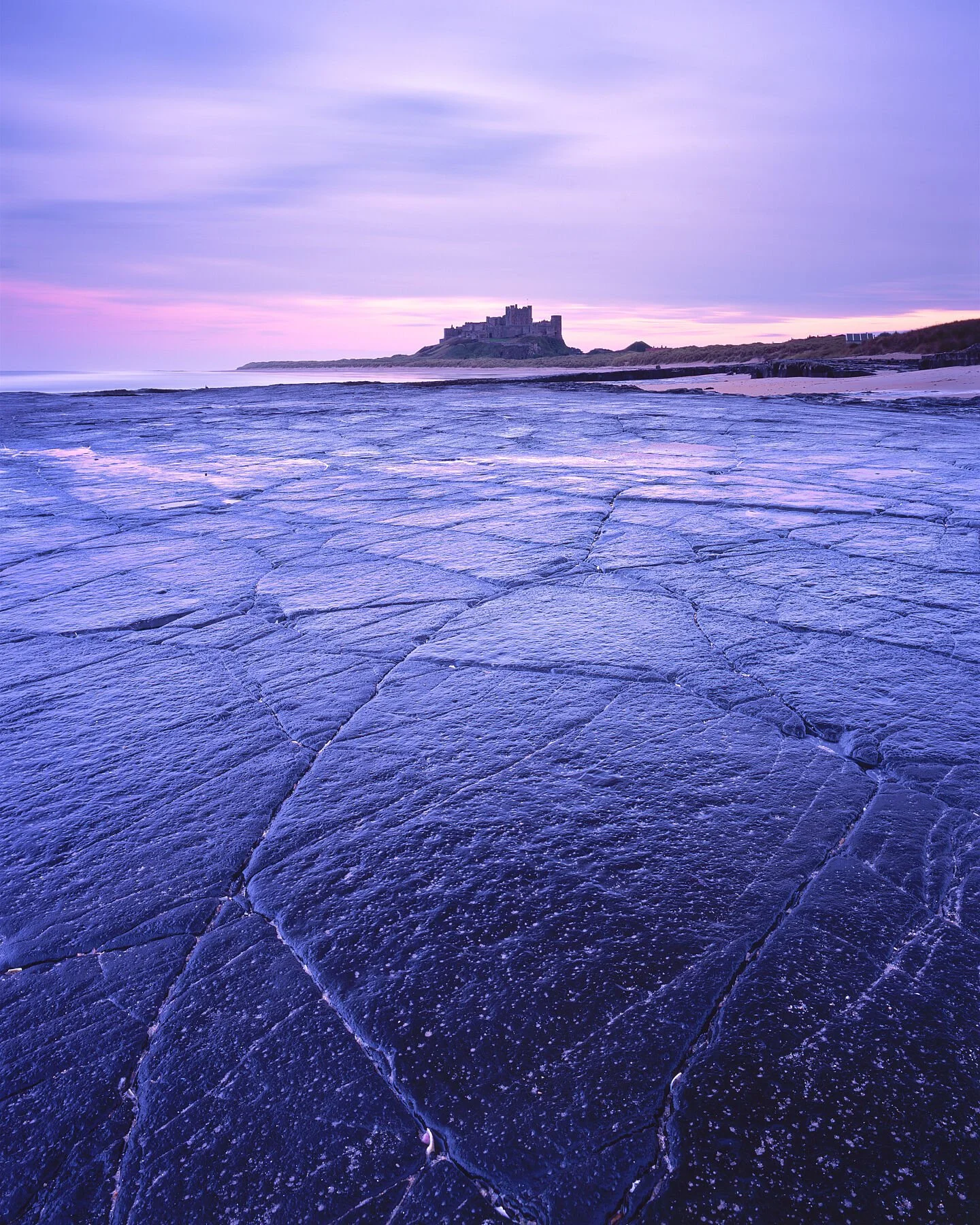Pennine Lines w/c 11 March 2024
|| Lousy || Meteorological shambles ||
Formative Guides || Paper Negative
|| Focus On... ||
The State Of The Guidebook Art
OK you know the score by now - insert paragraph moaning about the weather. It’s honestly just getting a bit ridiculous now, with the past week being dominated by weird laggy damp foggy weather on the easterlies. Worst grit season since records began anyone?
As a complete distraction from the world outside I spent some time this winter working on a few crags for the Rockfax app, which has given me a bit of time to ruminate on the state of play of climbing guides; guides of today, guides of the past, websites, apps, and whatnot. It won’t come as a surprise to anyone to learn that we live in a completely different information landscape from the mid-to-late 1990s, represented by my pile of old guides above. Without having social media to suck away dozens of hours of your time every week, and in the absence of literally any other hard info on anywhere (bar the odd magazine article) there was nothing else to do for the climber in their formative years but to sit and read and re-read guidebooks. To eagerly digest every scrap of information, every historical nugget, photo caption and anecdote the guide offered up. This explains why the old guides above aren’t actually in too bad a condition; in a remarkable foreshadowing of the app era it’s because the books rarely left the house. There was often no need once you’d committed what you needed to your random access memory.
I’m not convinced the conditions required for that level of obsessive guidebook immersion exist any more - the information void has been filled, and the saturation of climbing media of all varieties in the modern era means individual images don’t necessarily stick with you in the same way. But I suspect that print guides still resonate in a similar way that they used to when given half a chance, because most of us will agree that reading a book is just a different experience to reading something on your phone. Same as how listening to a record is different to streaming music.
You might expect that, mirroring the recent vinyl boom, print guides might be on for a comeback? As climbing is reaching commercial maturity there are no shortage of brands keen to flog you all manner of high-margin must-haves in an increasingly crowded market; bluetooth recruitment gauges, capybara-hair brushes, anatomical leggings, any number of Japanese artisan chalk formulations blessed by a Shinto priest (absolutely not all from the same quarry in China), even plant-based performance beverages - thankfully consigning those meat-based energy drinks like Bovril Sport to the history books. But yet brands notably aren’t falling over each other to produce beautifully designed, lovingly and painstakingly researched grassroots definitive guidebooks.
That should tell you something about the profitability and commercial viability of these sorts of guides in their traditional form. Quite simply, to do ‘em properly they are a hell of a lot of work. Beyond what most people understand or are willing to do. If you look at the best recent grassroots bouldering guides like the various North Wales editions or the Lakes Bouldering guide, these were produced by individuals with a remarkable drive and passion for development and documentation, who’ve put literally decades of graft into these labours of love - and crucially were pivotal to these areas’ development and hence have a foot in the door early for their respective stomping grounds. Every penny those guides make are more than earned twice over, but still I suspect you’d be unlikely to see any guidebook authors striding purposefully across the forecourt of a MacLaren dealership with a bulging attaché case handcuffed to their wrist any time soon. Unless you’re churning out hastily ghostwritten celeb biographies at the same rate that Will Bosi knocks out Font 8C ascents then Amazon have ensured that book publishing in general is a tough game these days. It certainly doesn’t boast the same return on investment as simply slapping a logo on a yoga mat and calling it a day.
My first book cover image || 2011 Vertebrate Peak guidebook
The other long-running precedent in UK guidebook production is that of volunteer-produced guides. For example the two excellent current YMC Yorkshire grit guides, or the last series of the BMC Peak guides, on the gritstone side of things culminating in the masterpiece of Over The Moors (and Peak Limestone South on the white seepy stuff). Here a huge amount person-hours by a whole fleet of keen volunteers has crystallised into some of the finest volunteer guides ever produced. To flick through these books is to see volunteer guides at their apex - beautifully produced, detailed, comprehensive, and dripping with history and rich contextual background. Leafing through them is also tinged with a bit of sadness though, once you realise Over The Moors was published in 2012 (also Lancashire Rock was 2016), even Peak Limestone South was now five years ago, it’s like listening to Any Winehouse’s Back To Black album knowing she died a few years later. These books represent the end of a run of similarly great guides benefiting from a crucial secret weapon - a paid central guidebook coordinator at the BMC. That post no longer exists and the BMC are apparently no longer producing any new guides. My tears dry on their own etc.
Even the YMC guides are at least ten years old now too. When I started climbing in 1997 the most recent Stanage guide was the 1989 edition, which everyone in the late ‘90s regarded as out-of-date and overdue for replacement long before it was a decade old. I suppose what I’m saying is don’t underestimate how much of an undertaking these sorts of guidebooks are and how long they take to come to fruition. You’re asking loads of people to basically take on a second unpaid job to make ‘em happen, or make guide production their hobby instead of actual climbing, and rely on a handful of key individuals with the relentless drive to bring everything together. “These so-called volunteers don’t even get paid” etc. Complete heroes in every sense, but it always seems pretty perilous in that it would be easy for something, anything, to derail this sort of work. In other parts of the country the likes of the FRCC and Climbers’ Club have managed to sustain this pretty well though, so I hope we’ve not seen the last of the volunteer guides in the Pennines.
So where does that leave us? Back to the Apps. It has been said (by who, I forget) that the way forward is apps for information, books for inspiration. So Grit Blocs falls into that latter category - although I should point out to any hard-of-thinking Amazon reviewers reading this that Grit Blocs very much ISN’T a guidebook. Actual print guidebooks have also stumbled into coffee table territory inadvertently anyway, on account of commercial considerations and spiralling print costs meaning they are just physically enormous objects now. The recent guides for North Wales and the Lakes bouldering, along with new Rockfax Peak Bouldering, are already well over a kilo each. Don’t attach a portable fingerboard to these without being thoroughly warmed up first.
Whilst the average trad rack is a lot lighter than it was in the late 1990s, for bouldering the opposite is true. Our climbing bags for this, the simplest and purest of the climbing disciplines, have been successfully infiltrated by fingerboards, umpteen pairs of shoes, kneepads, three different kinds of chalk in separate chalk bags, fans, hand warmers, moisturising sprays, and anti-irony sprays. And that’s before you’ve brought anything to eat or drink. Then some of us have to carry cameras around, so that kilo is an additional body or a couple of lenses. So yeah, it adds up. I can no longer just memorise entire guides any more either, because it requires forgetting some other stuff first. Limited brain capacity you see. So yeah, there’s definitely a place for well-implemented apps.
One of the nicest I’ve seen is actually the Boolder app for Fontainebleau. This is a free open source app, it’s ridiculously good - better than a lot of paid apps, but it’s not really an avenue that anyone has gone down in the UK yet. It will be interesting to see if this sort of community-run endeavour is the natural heir to the volunteer-produced guides of the past and if it’ll be sustainable - fingers crossed.
|| Supported By ||
|| Recently Through the lens ||
A little bit from Stanage and Froggatt before the easterles blew in all the clag this week.
|| Fresh Prints ||
Trying to forget about the Peak weather and looking forward to Northumberland. Sometimes you've got to put something just for yourself in these emails.... For a taste of the best bit of the English coastline check out these in the Print Shop.








